Report

This article is part of Bain's 2021 Technology Report.
Over the past decade, software has created tremendous value for investors and businesses, thanks largely to its transformative effect on the economy, its role in developing new cloud-based business models, and its ability to increase efficiency in operations. But while software’s success in the marketplace has lifted the valuations of software companies, our analysis suggests that some firms may still be undervalued.
In more mature software companies, we see oversized returns for companies that are moving to software-as-a-service subscription models (see Figure 1). The SaaS model allows companies to focus on new ways to create value, and since many companies are early on their journey, more gains may lie ahead.
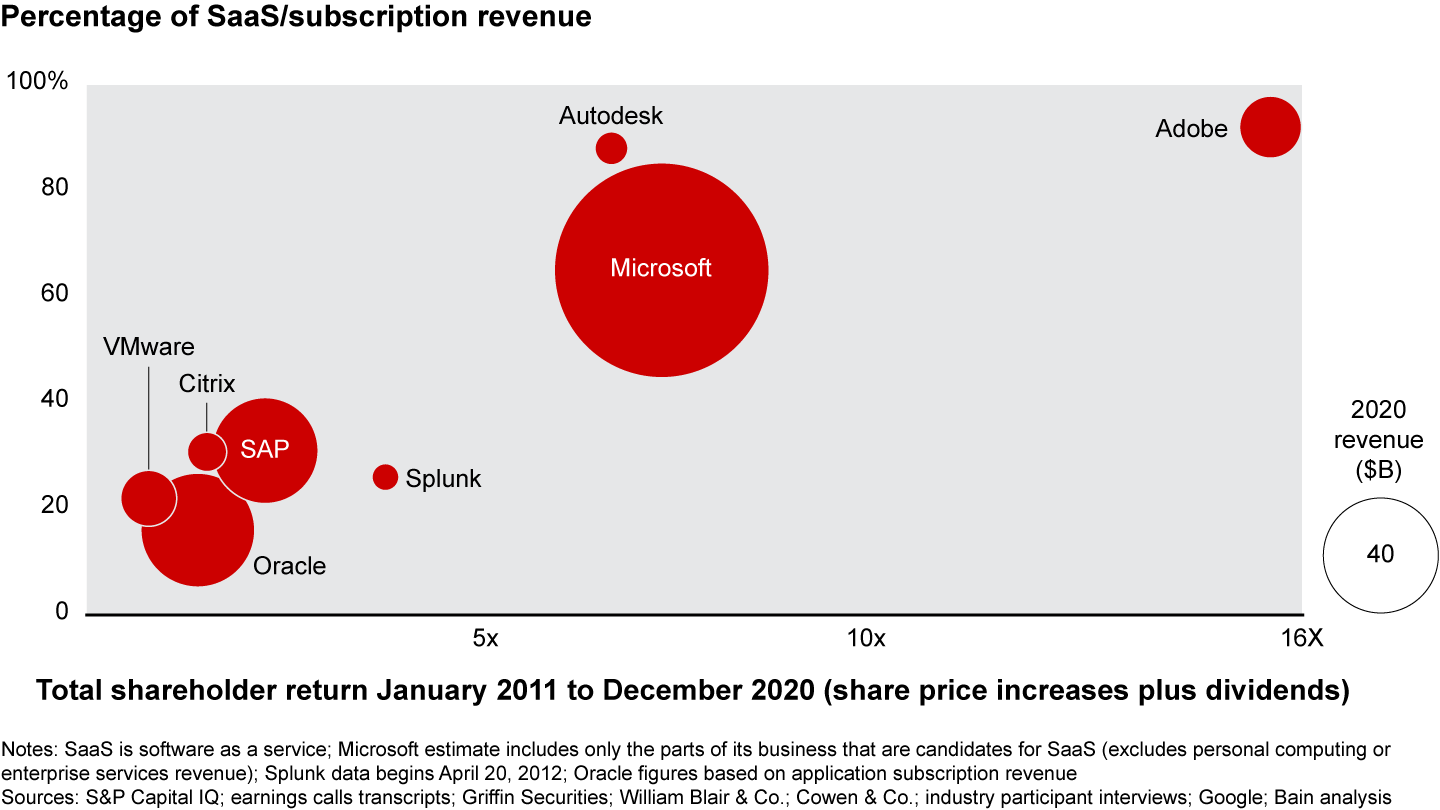
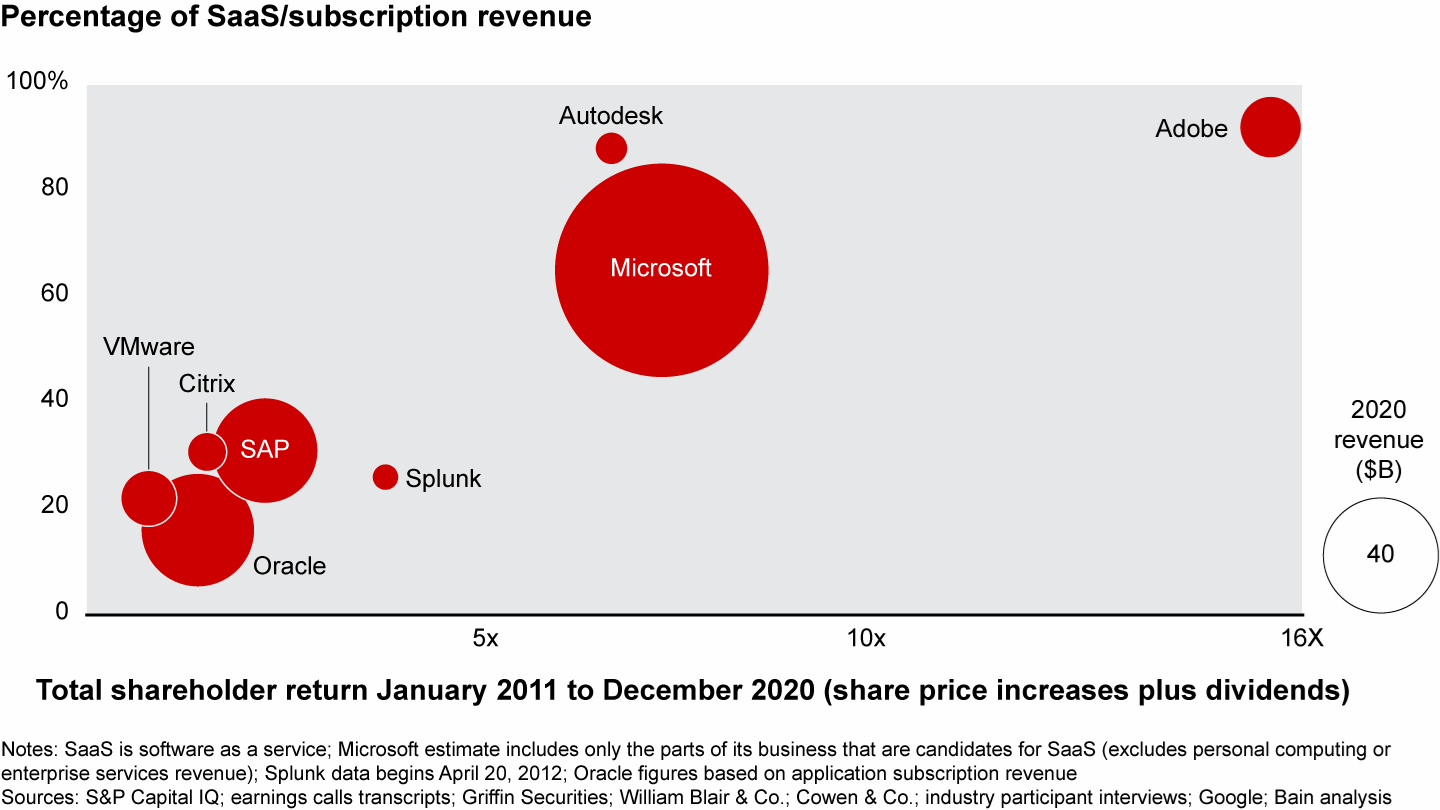
Many of these software firms may still be relatively undervalued by private equity investors. Analysis of technology deals over the past decade shows that while hurdle rates for software investments are about the same as for riskier industries (a target internal rate of return of 21% to 22%), software investments have been more likely to overperform and less likely to lose money (see Figures 2 and 3).
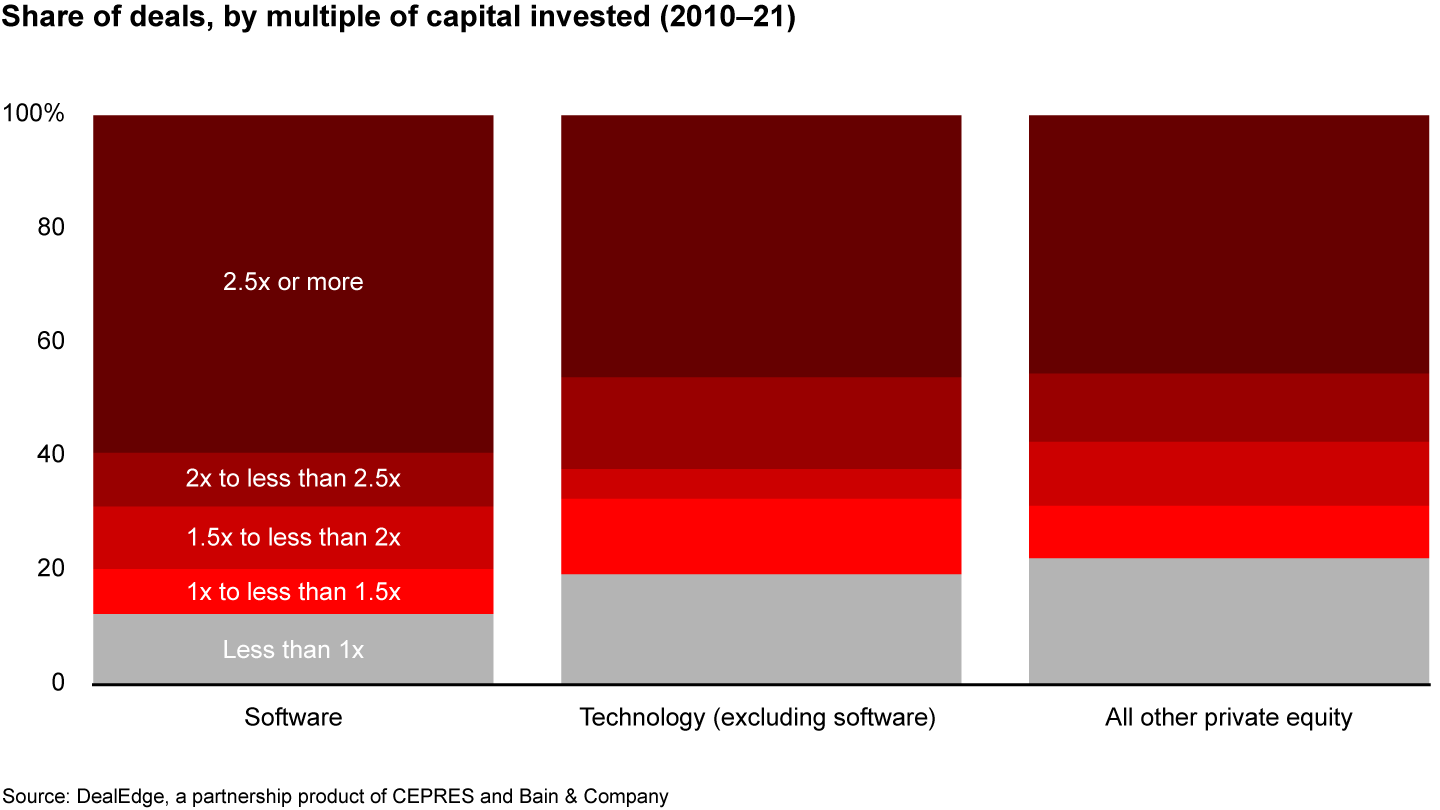
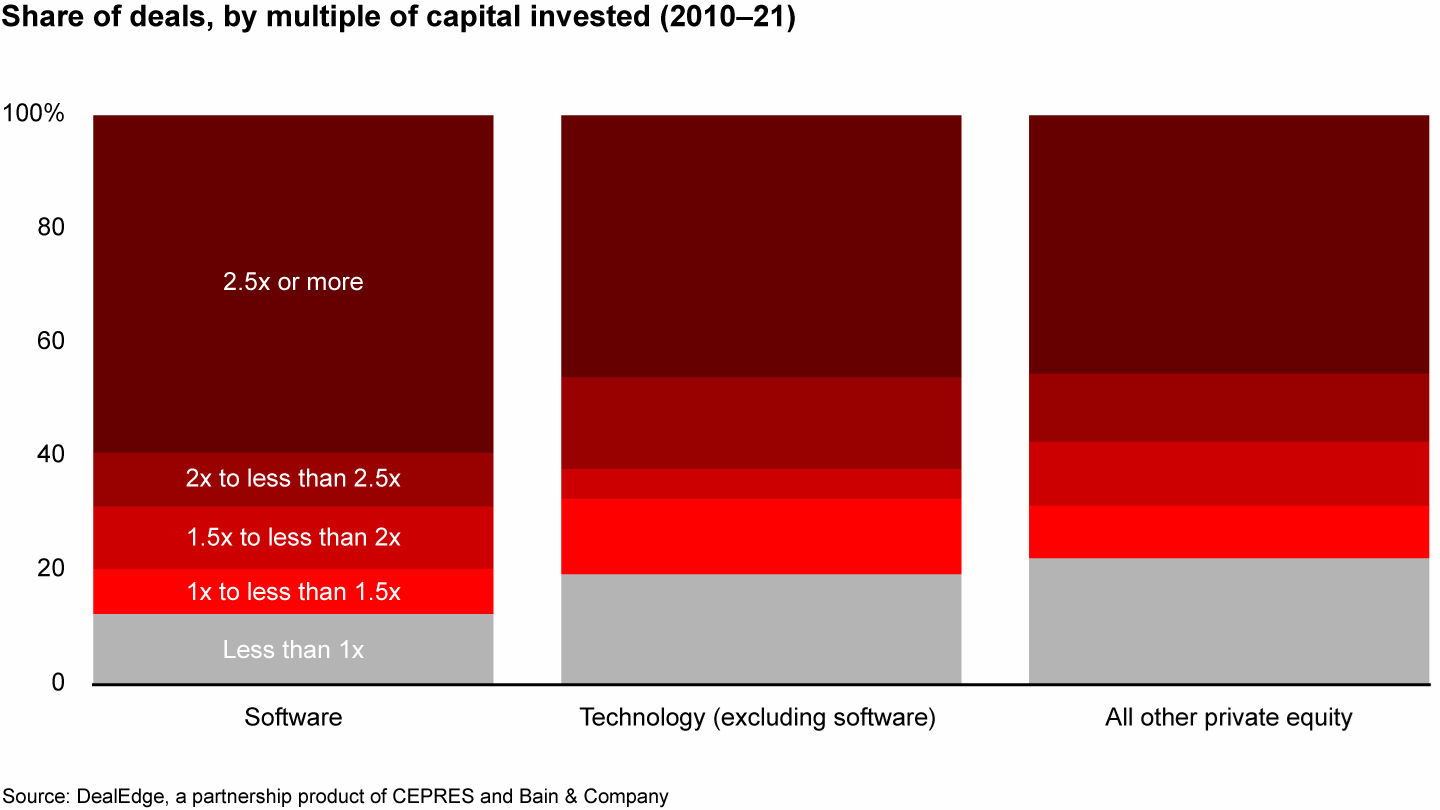
If investors identify these trends and believe that they’ll continue, we’re likely to see some willingness to accept a lower return for a lower-risk asset. Because current pricing and future returns move in opposite directions, lower hurdle rates could push valuations even higher, benefiting current owners.
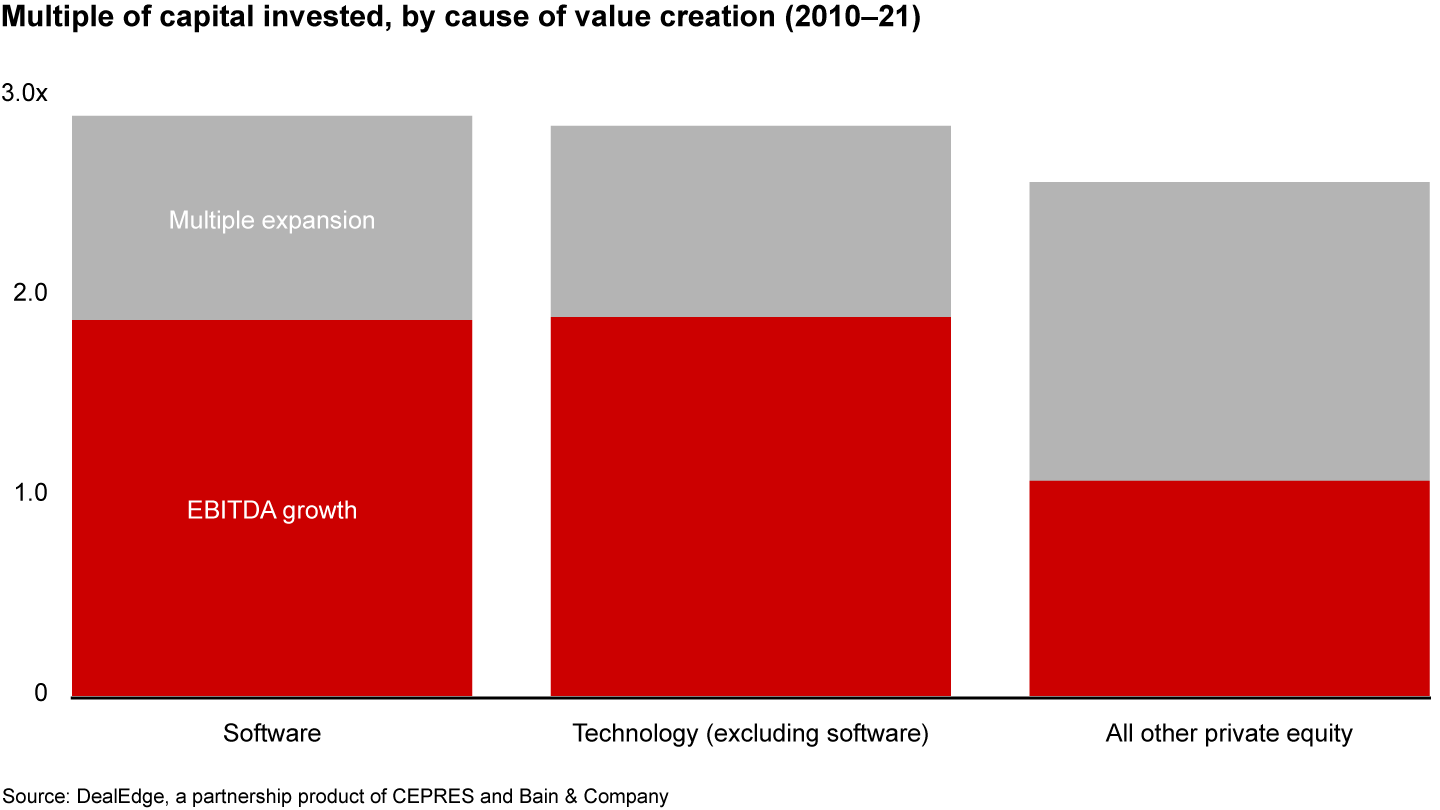
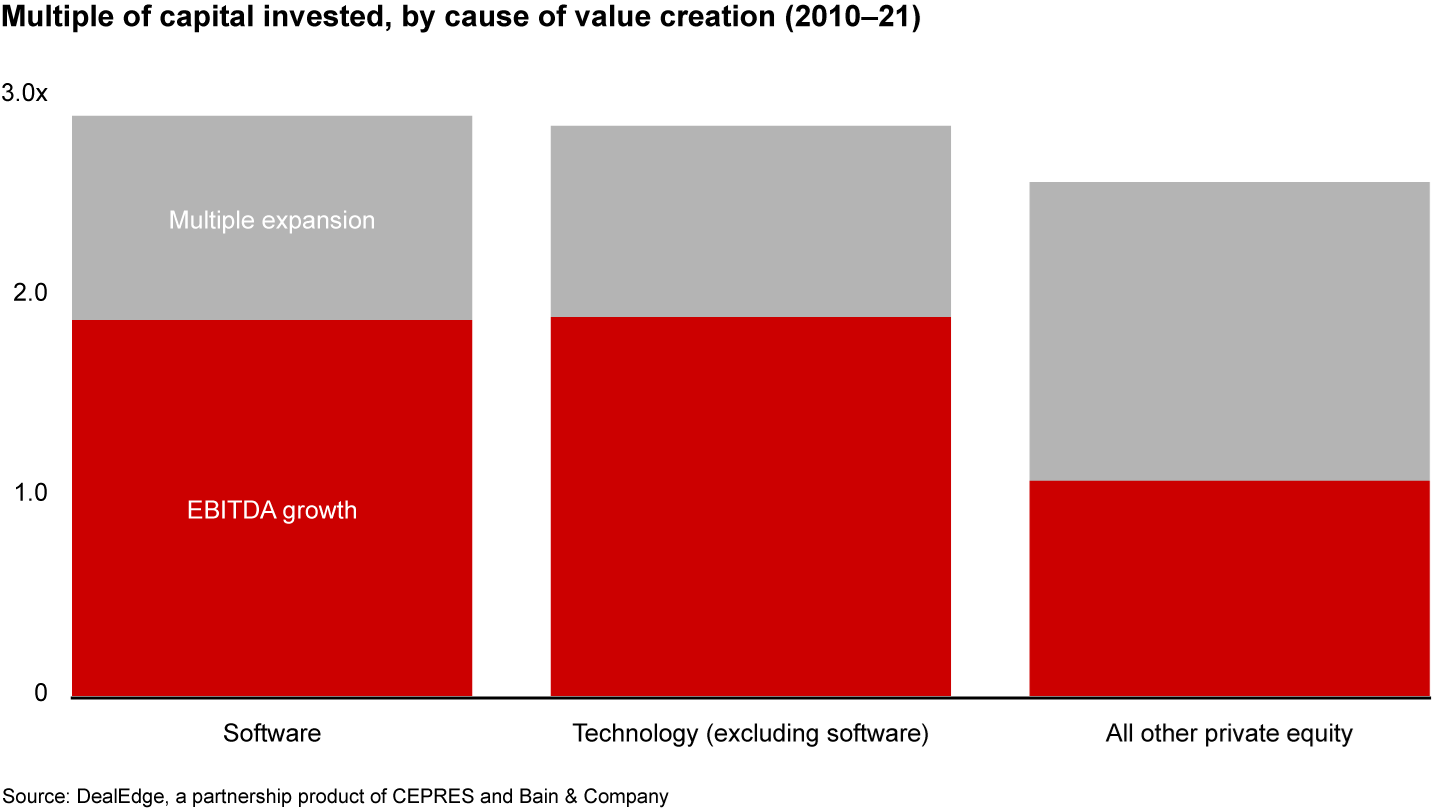
Sticky after all
While there were some worries that the transition to the service subscription model would reduce software’s traditional stickiness, those concerns may have been overwrought. When done well, the service model creates a stronger relationship between software vendors and customers, generating new sales opportunities.
Customers like the ability to try before buying and avoiding large, up-front license fees. Other meaningful benefits include:
- faster deployment and less time to real value creation;
- always running the most up-to-date and secure version; and
- the ability to offload more IT tasks to a remote vendor.
Vendors like that they can scale deployment and manage upgrades more consistently, reducing the cost of maintaining old versions. Even greater value comes from getting a better view of how customers use their service, which helps shorten the development time for new features. Rolling out these new features quickly can help companies earn price increases.
Four ways to drive value
Many enterprise software firms already enjoy profit levels that few companies in other industries could aspire to. As more customer companies move to the cloud model and launch their own SaaS products, there’s room to create much more value. But, as many executives know, success under this model requires changes in mindset and operations, a switch from selling licenses to encouraging consumption of services. Real transformation runs through four critical areas of change―and moving assertively could deliver a competitive edge.
- Embrace the cloud operating model. Selling and delivering continuous cloud services and metering the business require fundamental changes, including new processes, people, and systems. Metrics will also change. Rather than emphasizing license sales, a service model relies on metrics such as annual recurring revenue and consumption levels. Intuit moved assertively to make the shift almost a decade ago, deciding to expand its cloud delivery model when it identified competitors that were trying to disrupt the financial software market. At a time when most of Intuit's revenue came from software like QuickBooks, sold in stores, Intuit doubled down on cloud services, data security, and delivering a consistent user experience on a range of platforms, laying the groundwork for its current business model based on SaaS versions of TurboTax and QuickBooks.
- Transform Ops to DevOps. While development teams have followed Agile principles for some time, the cloud and SaaS model requires teams to take responsibility for operations; they become DevOps. Engineers are now service providers, no longer just code writers. This service orientation also translates into the fundamental architecture of the products. They move to service-oriented architectures (SOA), which enable much faster cycle times and continuous release of smaller features and functions, which all make them more responsive to customers’ needs. Adobe’s embrace of DevOps extends to its customers through tools in the Adobe Cloud suite. Customers won’t have to think about DevOps as a discrete methodology, but will see it as the normal process for writing and deploying code within Adobe’s cloud environment.
- Boost consumption through investments in customer success. The shift to a service model calls for reimagining the customer life cycle from discovery through sales, renewal, and expansion. Customer success teams become strategically important for increasing satisfaction, retention, upselling, and subscription renewals. These teams work closely with customers to make sure they get the most out of the product and all its capabilities. Customer success teams track customer value and relationships, using tools like the Net Promoter Score℠ or customer satisfaction score to gauge loyalty and prevent churn. Cisco’s decision to elevate its top customer service executive to senior management, and its hiring of Maria Martinez from Salesforce to fill that role, demonstrated its commitment to putting customer experience and customer success at the center of its service strategy.
- Pivot go-to-market to the cloud and digital. Leaders redesign their marketing and selling for SaaS and cloud models, emphasizing marketing directly to customers, generating demand through digital channels, and elevating specialist cloud sellers to become core reps. They package and price to generate “land and expand” purchases, and bundle offers to include customer care and success. Leaders establish rate cards and a mutually agreed-upon minimum usage of services by each customer. This not only gives the business a stable revenue floor, but can facilitate upselling and cross-selling through methods such as offering incentives for product upgrades. VMware’s Cloud Universal product suite offers customers the ability to deploy flexibly across private, public, or local cloud, to accelerate hybrid cloud adoption. VMware also reimagined the organization and compensation structures for its sales teams, to adapt to the shift from bookings and license sales to a reward system based on consumption.
Buyers and sellers
As the software sector continues to grow rapidly, here are some of the major implications for various stakeholders to keep in mind as they try to tap into that growth.
Software companies. While almost every software company is already on a journey to a consumption-based cloud model, most could move faster. Those that adapt too slowly to the SaaS model may have difficulty attracting new customers, who may opt for vendors that offer the delivery and subscription models they prefer.
Hardware technology companies. Makers of PCs, servers, peripherals, networking equipment, and semiconductors recognize the strategic opportunity and are investing in software and SaaS capabilities to differentiate their core products and build new business lines for future growth. Logitech, best known as a provider of peripheral devices, is experimenting with a service that helps gamers improve their skills. Its Playmaster portal assesses players’ game performance in Counter Strike: Global Offensive, and then offers a course of training exercises based on the findings.
Enterprise customers. As software continues “eating the world,” even nontechnology businesses are at some stage of digital transformation. Most are under intensifying pressure to reimagine the customer experience and gain a competitive advantage. Just as with software companies, some will be able to deepen their customer relationships with subscription and consumption-based models, in some cases by adapting existing services. For many buyers, the Covid-19 pandemic accelerated their migration to SaaS applications and cloud infrastructure (see Figure 4).
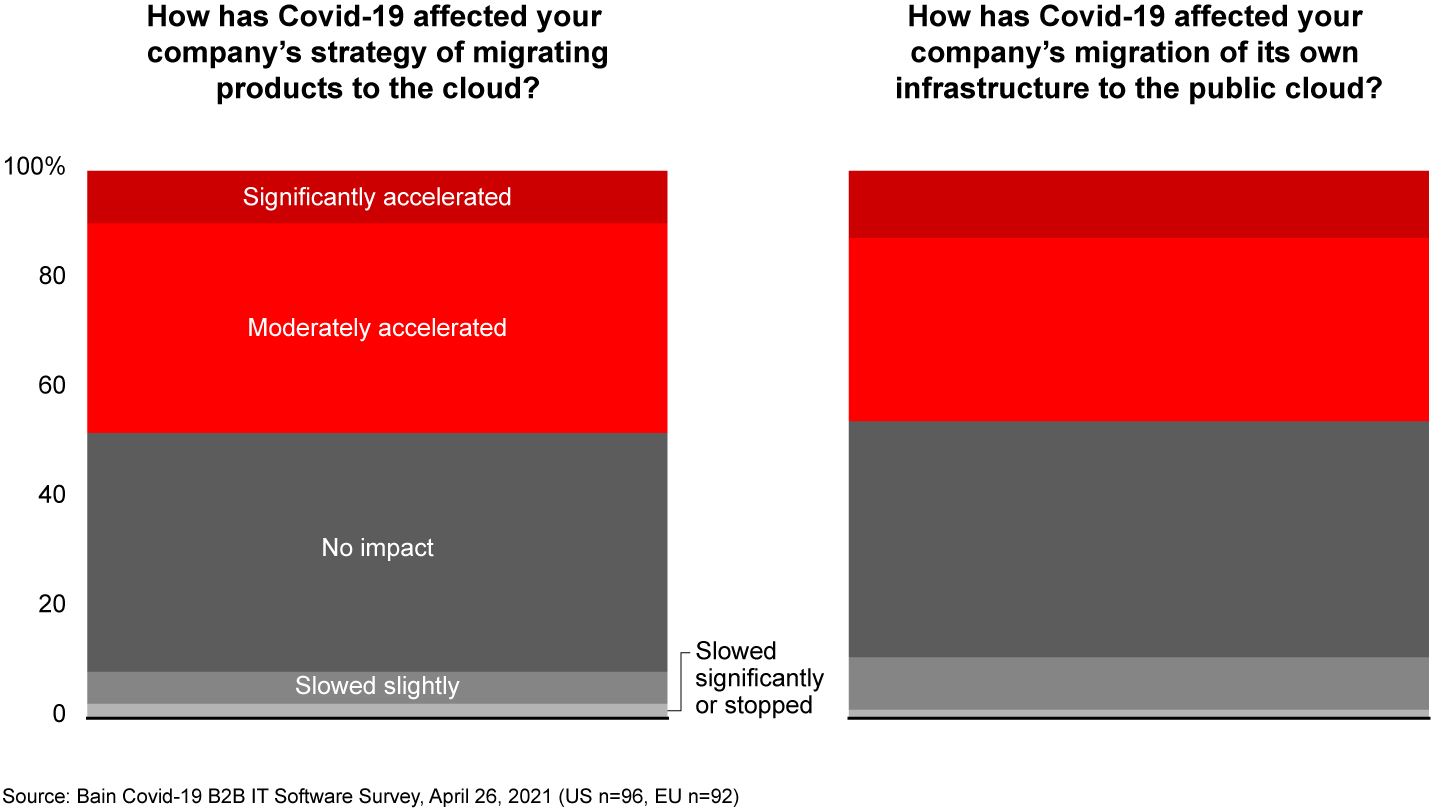
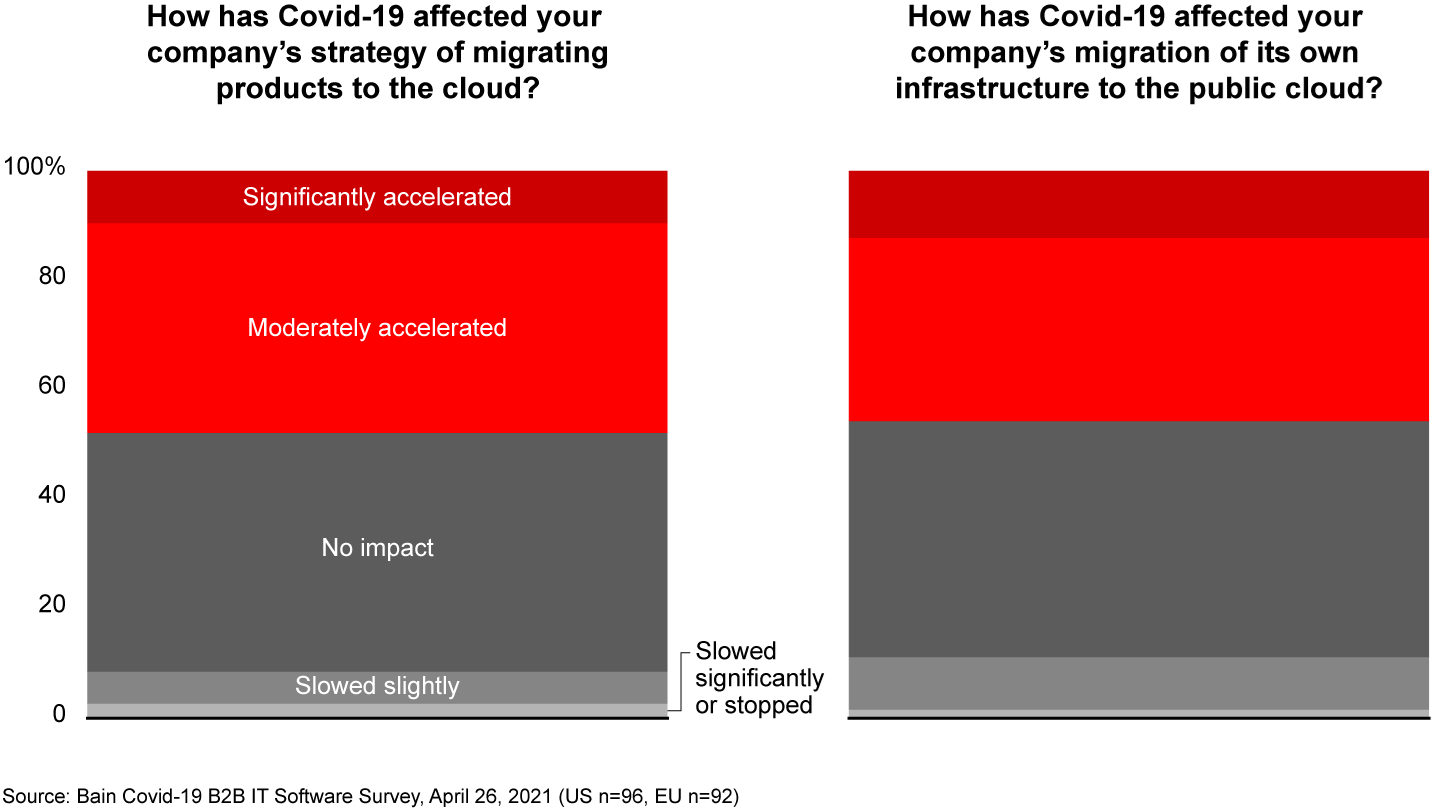
Private equity. Most investors know that enterprise software companies have delivered superior returns in recent years, and they can review their exposure, weighing the risks and rewards compared with other industries. Historically, software has been undervalued, and so lower hurdle rates may be deserved. Investors should not, however, make unfocused bets on the overall trend. As competition for strong assets increases, private equity investors must focus even more on investing in businesses where they have real advantage. Once they own a business, PE investors should be active owners, helping their portfolio grow rapidly, moving to SaaS models, and making use of best practices in selling and product development. More-passive investors are evolving or getting competed out of the market.
Net Promoter®, NPS®, and the NPS-related emoticons are registered trademarks of Bain & Company, Inc., Satmetrix Systems, Inc., and Fred Reichheld. Net Promoter Score℠ and Net Promoter System℠ are service marks of Bain & Company, Inc., Satmetrix Systems, Inc., and Fred Reichheld.